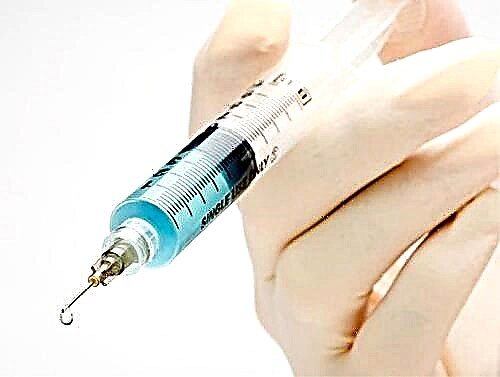
In today's world filled with stress and adverse factors, it has become increasingly difficult for men to maintain their reproductive health. Among the numerous forms of male infertility, oligospermia has recently begun to occur. We will tell you in more detail about what this pathology is, whether there is a chance of conceiving a child with it.

What it is?
Fertility of a man is directly influenced not only by the qualitative composition of the seminal fluid, but also by its quantity. Normally, a healthy normal man produces about 3-5 ml of sperm per ejaculation. This amount is considered to be sufficient for conception to occur without problems. If the amount of ejaculate is reduced and is less than 3 ml, then they say that this man has oligospermia.
The number of active, live and suitable for fertilization spermatozoa can theoretically be preserved in a small volume of sperm, but oligospermia is rarely an independent form of infertility. Usually it is combined with erectile dysfunction, inability to eject semen during orgasm. Often oligospermia is combined with asthenozoospermia, in which the mobility of male germ cells is impaired.

Oligospermia, or rather its variety, is spoken of if the concentration of living and mobile, healthy sperm in the ejaculate is below normal. The World Health Organization recommends comparing the spermogram value with the standard of 20 million cells per ml. If a man has fewer sperm, then a diagnosis of oligozoospermia is made.
Doctors suspect that this problem is inherent in at least half of modern men, but it is not possible to calculate more accurately, because oligospermia becomes known only when a couple turns to doctors with a request to help find the cause of infertility. Men who do not go to the doctor and do not do a spermogram may not realize that the disease has not spared them all their lives.
But there are quite definite statistics regarding cases of male infertility. Among all those who undergo a spermogram due to the inability to conceive a child, oligospermia is detected in about 20% of cases.

Causes of occurrence
The reasons for the decrease in the number of motile and healthy sperm in the ejaculate and the number of the ejaculate itself may be different. Here are just some of the most common ones.
- Varicocele... Varicose veins of the scrotum are dangerous because the temperature in the scrotum rises significantly. That is why oligospermia is often observed with varicocele.
- Infections. Sexually transmitted diseases, as well as infections that are usually classified as latent, for example, chlamydia, can lead to a violation of the number of sperm suitable for conception. Also, any infection of the genitourinary system can be the cause of a decrease in reproductive abilities, if it is not treated for a long time. Chronic infectious diseases often lead to oligospermia.
- Genetic causes... Sometimes oligozoospermia is a genetic trait of a man (it can be inherited by him from his father, for example). In this case, all analyzes are normal, there are no deviations, the body is healthy, with the exception of the composition of the semen. Sperm can initially be produced in small quantities.

- Retrograde ejaculation. Many men do not have problems with the ejaculation process itself. But often oligospermia is recorded in men with retrograde ejaculation, in which sperm is thrown in the opposite direction, that is, into the bladder.
- Injuries. Any injuries and bruises of the scrotum and penis, as well as tumors, can cause a violation of the outflow of seminal fluid and reduce its reproductive value.
- Medicines. The number of sperm suitable for conception is significantly reduced in men who have been taking antibiotics for a long time, as well as drugs that lower blood pressure.
- Hormones... The cause of oligospermia can be thyroid disorders, pituitary disorders, as well as unauthorized intake of hormonal drugs. So, it is not uncommon for male athletes to take anabolic steroids in order to quickly bring their body shapes to the desired ones. Quite often, this is what causes the development of male infertility in the form of oligospermia.


- Toxic effects. The reason for the decrease in the number of sperm and the volume of ejaculate may lie in the harmful effects on the male body of heavy metal salts, pesticides, painting materials. This most often happens to men who are employed in "harmful" enterprises and construction sites.
- Irradiation. Men who underwent radiation treatment for cancer, most of them suffer from oligospermia. Also, pathology develops from the effects of ionizing radiation in those who have contact with radioactive materials and installations.
- Unhealthy Lifestyle... The systematic use of alcohol, tobacco, drugs cannot but affect the number of living sperm. The longer a man abuses, the less germ cells suitable for conception are found in his seminal fluid.


Often, men themselves do not realize that they are causing themselves enormous harm, the consequences of which may then interfere with the continuation of the family. This concerns the passion for going to the baths and saunas, for the use of electric heated seats in the car - overheating of the scrotum and testicles is dangerous for men's health. Also, the sperm count is often found in men who lead a very nervous lifestyle and are often in a state of severe stress, in overweight men who lead a hypodynamic lifestyle.
Oligospermia is often diagnosed in men who do not eat properly, for example, in vegetarians, because a small amount of protein food does not contribute to the intensive production of young and healthy sperm in the male body. Also, this ailment can be found in the stronger sex, who prefer to wear tight-fitting swimming trunks and tight pants.

The degree of the disease
In total, four degrees of oligospermia are known. In the first degree, the sperm count in the total volume of ejaculate is in the range of 40-60 million. Oligozoospermia of the 2nd degree is the content of 20 to 40 million cells in the ejaculate. In the third degree, the concentration of germ cells is from 5 to 20 million, and the most difficult fourth degree implies the presence of less than 5 million sperm.

Diagnostics
To begin with, the doctor will need to establish whether oligospermia is physiological. This can happen if a man is sexually active too: the amount of sperm in this case decreases, but without compromising its quality. It is usually recommended to refrain from intimate relationships for about 5-6 days and retake the spermogram.
If the diagnosis is confirmed, then the man is prescribed additional examinations. In no case should you refuse them, because they will help establish the true cause of the problem and find a way to solve it. Typically, this may require:
- general urine and blood tests;
- tests for venereal and genital infections;
- HIV test;
- Ultrasound of the pelvic organs;
- the conclusion of the urologist;
- blood test for hormones.
The rest of the tests and examinations are prescribed by the doctor on an individual basis.
Influence on conception
The inability to conceive a child on their own with oligospermia is quite understandable: on the way to the egg, most of the male germ cells die, and if the number is already insufficient, then it is quite difficult to count on at least one “daredevil” to reach the cherished goal.
Despite the prevalence of this ailment, oligospermia is considered the simplest form of male infertility, in which even without appropriate treatment there are chances of conceiving a baby on their own, however, they are very small. When assessing a man's fertility, it is important to evaluate the degree of hypospermia (this is another name for oligospermia). The likelihood of pregnancy is proportional to the severity of the disease.

But even the 4th degree of illness is not a sentence, and a man may well become a dad, provided that he agrees to be patiently and step by step treated. Treatment can take from several months to a year.
Treatment
Treatment is primarily aimed at eliminating the cause that caused a violation of the quantity and quality of semen in a man. If the matter is in the inflammatory process, antibiotic drugs are prescribed, and in case of a viral ailment, antiviral treatment is carried out and special attention is paid to strengthening the immune system. Varicocele needs surgical intervention, after which reproductive functions are restored in full.
It is accepted to treat oligospermia in a complex way - there is no universal drug, the reception of which can save a man from the problem. It is usually recommended to change your lifestyle: say goodbye to bad habits, start eating right, take vitamins A, C and E, folic acid, as well as drugs that belong to dietary supplements: "Spermactin", "Verona", "Viardo", "Selzink" ...
A man should refrain from excessive physical exertion, but at the same time not lead a sofa lifestyle. Light jogging, walking in the fresh air will only benefit. For men with oligospermia, a special sexual regimen is recommended: the frequency of sexual contacts should not be too frequent, but prolonged abstinence is also not recommended. Doctors consider the optimal frequency 2-3 times a week.
After starting treatment for 3-4 months, you need to re-pass the spermogram in order to assess the dynamics. If the situation has improved, doctors prescribe parallel treatment for the woman. She is recommended to take vitamins and use vaginal agents, which should put in order the microflora, eliminate excessive acidity, so that as many male germ cells as possible can get to the goal alive.


If the treatment doesn't work
If the treatment does not work, this most likely means that the cause of the problem lies in the genetic characteristics of this man. It is useless to treat this, but he also has a chance of paternity. If there are no other pathologies according to the spermogram results, live and active spermatozoa can be isolated in laboratory conditions using modern ultra-powerful microscopes. In this case, a woman can become pregnant with several methods.
Most often it is recommended to do this through intrauterine insemination, in which sperm is injected into the cervix, thereby the path of the male sex cells will be shorter, and the chances of conception will increase.
If there are accompanying deviations, IVF, ICSI, ICSI-MAX methods can be used. According to indications, if male infertility is not treated, assisted reproductive technologies are carried out under a compulsory health insurance policy.


Reviews
According to women, their husbands, for the most part, take the diagnosis hard, especially if doctors immediately establish 3-4 degrees of oligozoospermia. Many representatives of the stronger sex begin to worry, refuse to discuss future prospects with their wife. Women who have successfully passed this path together with their second halves argue that you just need to give the man time, not to rush him. The day will come when he can calmly discuss treatment, undergo additional research and begin treatment.
A diagnosis such as hypospermia is always a test of the family's strength. If the spouses do not divorce, do not give up, then the treatment for the most part gives the desired results. Some women report that they are expecting their second baby after their husband once underwent a long course of treatment. On average, treatment takes about six months.

For information on male infertility and how to help a man become a father, see the next video.



